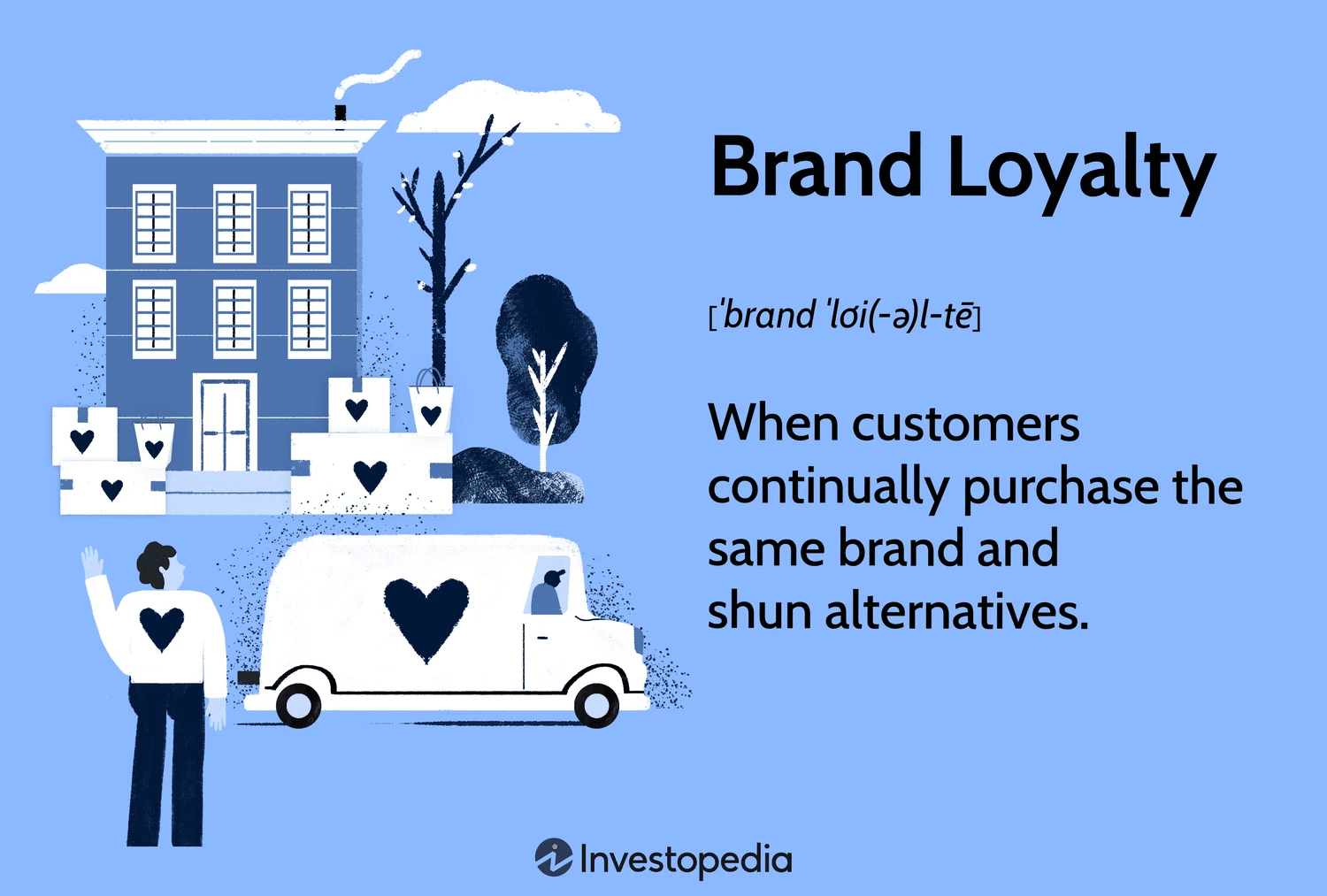According to Harvard Business Review (HBR), companies excelling in brand loyalty and customer loyalty metrics experience significant growth compared to their industry counterparts. Such firms not only witness revenue growth that outpaces peers by 2.5 times but also deliver greater returns to shareholders, ranging from two to five times over a decade .
Brand loyalty, a customer’s commitment to consistently purchasing a specific brand regardless of price, is a potent driver of profitability. A substantial 65% of a company’s revenue typically stems from repeat business with existing loyal clients. Not only do brand-loyal customers make purchases more frequently, they also incur lower costs to maintain compared to acquiring new customers .
Especially in the aftermath of the sales decline prompted by the 2020 pandemic, businesses across sectors face a critical need to invest in marketing strategies aimed at retaining their valuable existing brand-loyal customer base.
What Is Brand Loyalty?
In contrast to customer loyalty, which revolves around price and discounts, brand loyalty is based on perception—specifically, the belief that a brand embodies superior quality and service compared to its competitors. Such customers prioritize the brand’s value and service over price considerations, leading to larger profit margins on their purchases.
Once established, brand loyalty proves relatively easy to maintain, given that product quality and service standards uphold their excellence. Additionally, sustaining brand loyalty is more cost-effective compared to nurturing customer loyalty, which often requires continuous pricing competitiveness.
How to Build Brand Loyalty
To fortify brand loyalty among consumers in fiercely competitive markets, marketing strategies focus on monitoring trends, analyzing spending patterns, and crafting targeted advertising campaigns for existing and prospective brand-loyal customer segments.
Some commonly cited strategies to foster brand loyalty include prioritizing top-quality products, delivering exceptional customer service, employing brand ambassadors, offering loyalty programs, and building an engaged online community to deepen connections with customers.
**Best-in-Class Quality:** The foremost requirement for brand loyalty is superlative quality. Consistent delivery of top-notch products fosters customer advocacy, encouraging positive word-of-mouth and sustained patronage.
**Customer Service:** Investing in exceptional customer service significantly enhances brand loyalty, as it makes customers feel valued and differentiates the brand from competitors. Accessible systems for feedback submission and prompt resolution of queries are pivotal for maximizing brand loyalty.
**Brand Ambassadors:** Leveraging brand ambassadors, who act as marketing representatives for products, can amplify brand loyalty efforts. These ambassadors, equipped with strong marketing acumen and a robust online presence, help build lasting customer relationships and gather valuable market insights for business improvement.
**Loyalty Programs:** Establishing customer rewards programs is a direct method to cultivate brand loyalty. While such programs may incur expenses for discounts and incentives, the long-term benefits of retaining existing customers far outweigh the costs of acquiring new ones.
**Online Community:** As online commerce continues to surge, creating an engaged online community is crucial for fostering brand loyalty. This community not only facilitates deeper customer connections but also acts as a conduit for seamless transition from social interaction to purchase conversion.
**Apple:** Apple, with its exceptional brand loyalty score of 92%, is renowned for retaining a vast percentage of loyal clients compared to its competitors. This tech giant’s success is attributed not only to innovative technology and design but also to its robust brand power and exemplary customer service.
**Nike:** Nike’s status as the top sports brand is fueled by a leading membership program offering exclusive perks, community engagement, personalized experiences, and an immersive omnichannel environment. These pillars of brand loyalty enable Nike to command premium prices and reduce marketing costs, particularly in engaging existing clientele.
Statistics on Brand Loyalty and Profitability
A significant body of research underscores the strong correlation between brand loyalty and profitability, showcasing impressive statistics:
**Customer Retention:** Harvard Business School’s findings on enhancing customer retention impact profits significantly, with as little as a 5% increase leading to substantial profit boosts.
**Customer Lifetime Value (CLV):** Microsoft’s research highlights that a mere 7% increase in brand loyalty elevates the customer lifetime value by a noteworthy 85%, signaling long-term benefits for businesses.
**Customer Service:** Consumer loyalty remains closely linked to exceptional customer service, with a staggering 83% of customers willing to switch brands due to poor service experiences.
**Consistent Quality:** A substantial 74% of consumers cite product quality as the primary reason for brand loyalty, underscoring the critical role of product excellence in customer retention.
**Corporate Social Responsibility (CSR):** A notable 25% of Gen-Z and Millennial consumers exhibit willingness to pay more for brands championing corporate social responsibility, emphasizing the growing importance of ethical and socially responsible practices in brand loyalty.
The Bottom Line
Brand loyalty forms the cornerstone of marketing success by fostering enduring customer relationships. By prioritizing retention, customer satisfaction, and increasing customer lifetime value, businesses can enhance profitability without solely focusing on acquiring new customers.
